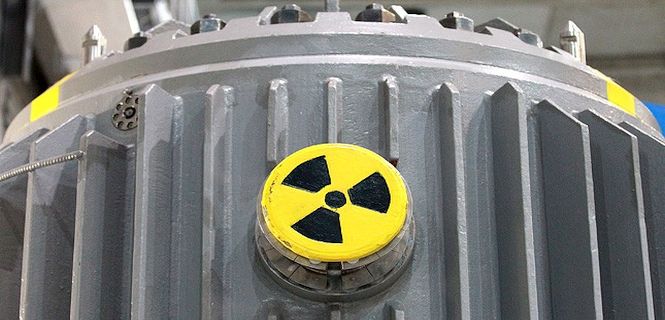
On April 2, Iran and the P5+1 concluded a “Political Framework” regarding the Iranian nuclear program after painstaking rounds of negotiations. A glance at history shows the twists and turns and ups and downs of this whole program since its inception. From Western-assisted to facing Western hostility, this program certainly phased through numerous regional, global, political, and economic dynamics. The project, initiated under the “Atoms for Peace” program, turned into a threat to regional and global peace. This whole rollercoaster cycle demonstrates that there is neither a permanent foe nor a friend in international relations.
This whole issue also supports the neo-liberal ideology of diplomacy, which could be summarized as such: the negotiation table is the ultimate place for resolution of conflicts and issues. remained a core reason for hostility between the Western states and Iran, but both sides avoided using hard power. Rather, the United States, the United Nations, and the European Union imposed sanctions as a tool of soft power. These sanctions have not only worsened Iran’s image in the global community, but have also immensely affected the Iranian economy. The Iranian trade and export rate illustrates a clearer picture regarding the end result of these sanctions- a 60% reduction in Iranian oil exports since 2012. Iran’s oil production decreased from 1.5 million barrels per day to 1 million barrels per day over the past three years because of these sanctions.
This historic framework agreement includes:
- The downsizing of Iran’s nuclear centrifuges from 19,000 to 6,000, limiting uranium enrichment
- An agreement that Iran will not enrich uranium over 3.67% for the next 15 years
- A reduction in the Iranian stockpile of Low-enriched Uranium (LEU) from 10,000 kg to 300 kg of 3.67% LEU
- Regular IAEA inspections and visits for as long as the next 25 years
- Sanctions will be lifted in different phases in the context of Iran’s compliance with the agreement
Pros and Cons of the Political Framework
Domestic Challenges
Although both entities have agreed on this framework, the final deal has yet to be signed, with a self-imposed deadline of June 30, 2015. During this period, both sides, especially the United States and Iranian governments, will face a number of challenges on the domestic front. Iran’s moderate regime will face a hard time convincing the hardliners. This nuclear program also has deep sentimental aspects for the masses of Iran. The program is a symbol of pride, as well as deterrence. Policymakers will have a tough time convincing domestic constituencies.
The same is true for the Obama Administration, which is expected to face opposition from the Republican-dominated Congress. Forty-seven Congressmen have already shown their discontent regarding negotiations and the deal with Iran. Along with facing a dubious Congress, which succeeded in pressuring President Obama and received thirty crucial days to review the deal in accordance to their demands, Obama may have to convince the next U.S. president regarding this agreement with Iran.
Terminological Ambiguities and Trust Deficiency
Choosing the appropriate wording in treaties and agreements is a critical issue in the finalization of any deal in international relations. U.S. Secretary of State John Kerry views this nuclear deal as a mere “political commitment.” Iranian Foreign Minister Mohammad Javad Zarif, meanwhile, stated it was a binding deal under UN regulations. These statements illustrate the diplomatic terminological gap between the two states. This terminology difference will become a hurdle in the decision of the final draft of this deal. Both sides will try to win over the other to establish their diplomatic victory. On the one hand, the rigidness can jeopardize this deal. On the other hand, some flexibility will surely help in the advancement towards a historic agreement.
Apprehensions by Saudi Arabia and Israel
Ashish Kumar Sen describes Saudi Arabia and Israel as “strange bedfellows” because of their historical rivalry, despite sharing the same camp against Iran. Saudi Arabia opposes this deal on the basis of the Shiite-Sunni ideology clash. Moreover, Saudi Arabia is fearful of Iran gaining a dominant role in the region. The Iran-Saudi Arabia rivalry has deep roots in the 1979 Afghan War, and continues today through the Houthi rebel conflict in Yemen. Neither state is ready to stand down, which could lead to more clashes. On the other hand, for Israel, it is not simply a matter of Iran’s extremist threat. Rather, Israel also fears Iran’s competitive status in regional politics. It is the expected balance of power in the region that bothers Israel most, with Saudi Arabia clearly on the same page. In Netanyahu’s speech to the U.S. Congress, it can be observed that it is not the Bomb, but rather policies, behavior, and the state of Iran that he wants to be eliminated.
Regional Implications
This deal will have significant strategic and economic implications for the region. First, after the lifting of sanctions, Iranian oil exports should increase significantly. This will create tough competition for the Gulf states, whose economies are already under strain due to the sinking price of oil. The long-planned gas pipeline between Pakistan and Iran will certainly move forward, as the United States was the major opponent of this project. Strategically, Iran will likely play a more critical role in Iraq against ISIS and will likely enhance its support for Houthi rebels in Yemen against Saudi Arabia.
This whole regional scenario will affect Pakistan in particular, specifically in the context of the conflict in Yemen, where Saudi Arabia has asked for military assistance from Pakistan. Providing military assistance would mean going against its immediate neighbor, Iran. Henceforth Pakistan will need to take highly cautious policy steps under these changing dynamics.
***